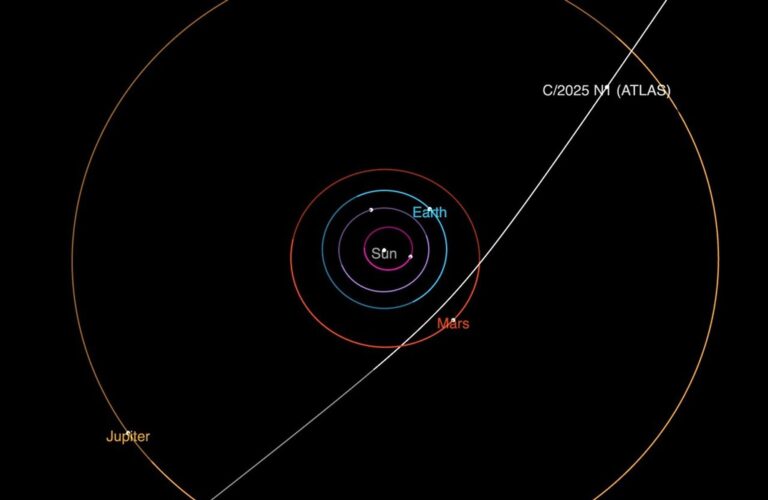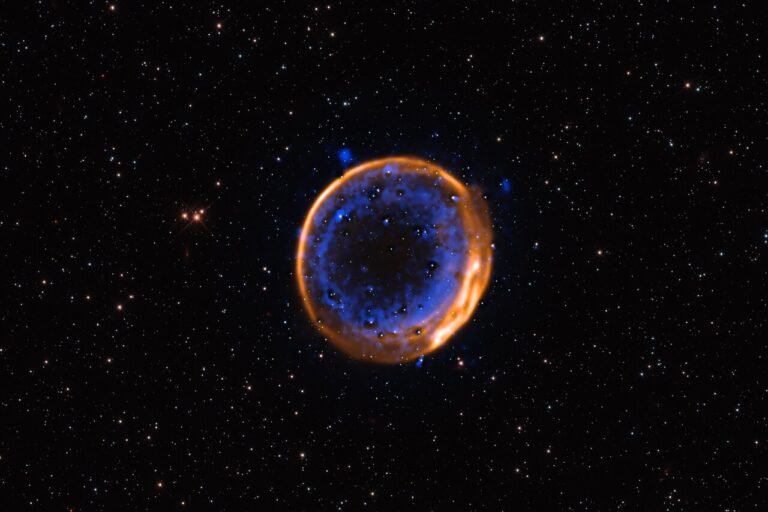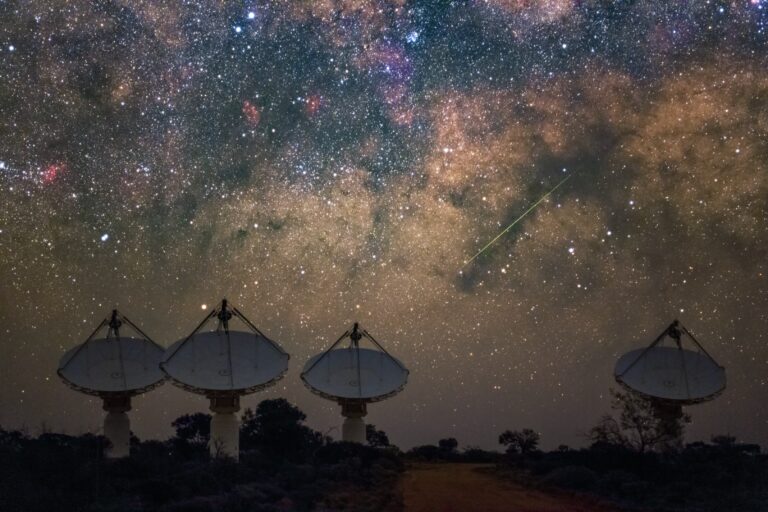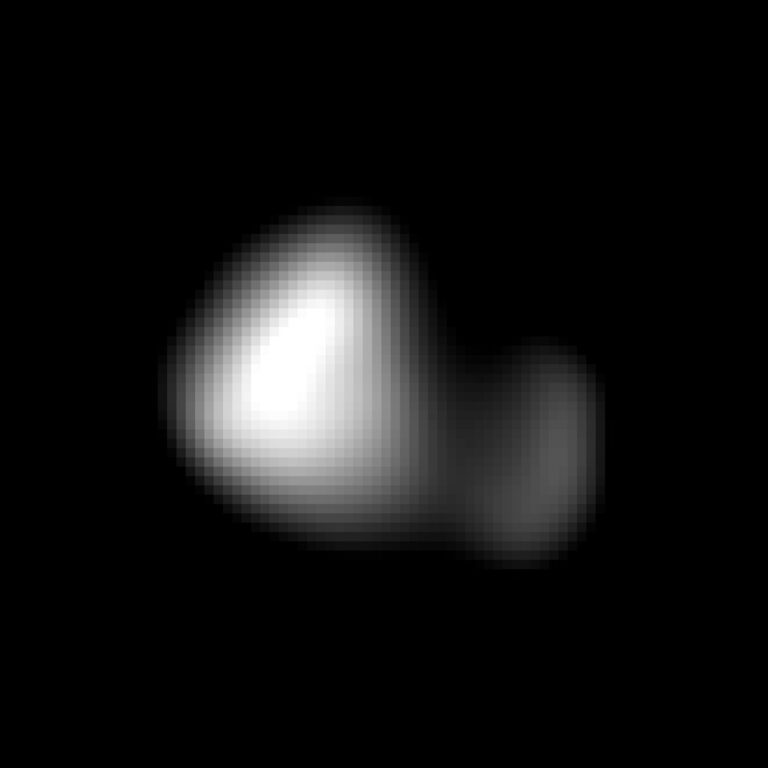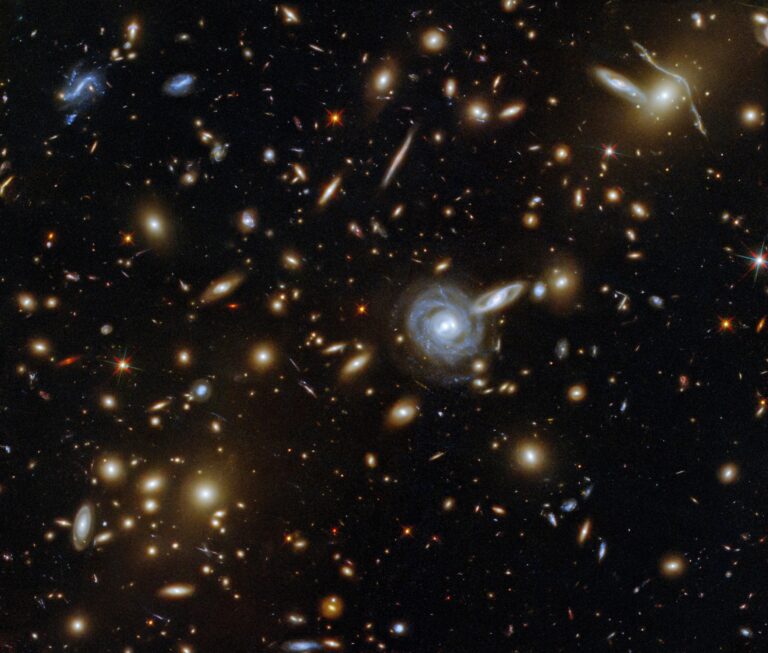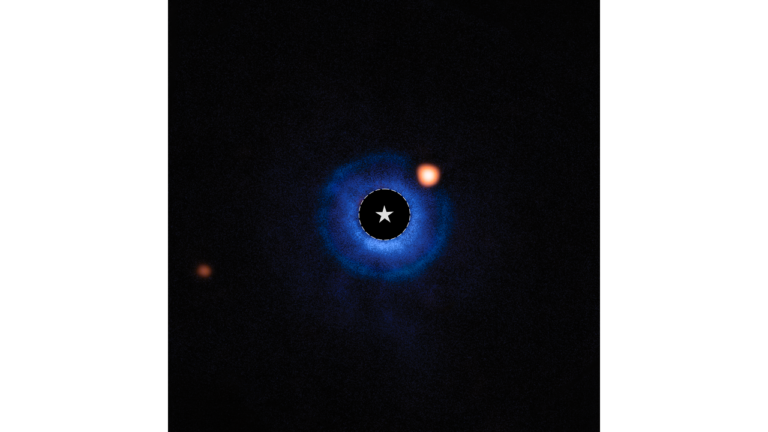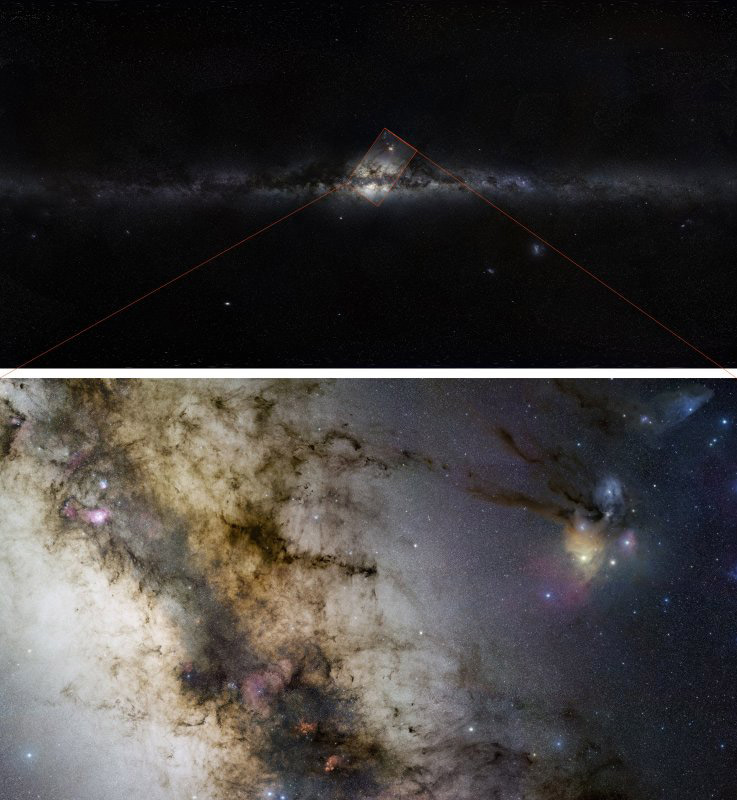
Key Takeaways:

The two first images of ESO’s GigaGalaxy Zoom project combined to show the whole panorama of the Milky Way as can be seen with the unaided eye, and a more central region observed with an amateur telescope.
ESO/S. Brunier/S. Guisard
September 22, 2009
European Southern Observatory (ESO) unveiled the second of three images from its GigaGalaxy Zoom project. It is a new and wonderful 340-million-pixel vista of the central parts of our home galaxy as seen from ESO’s Paranal Observatory with an amateur telescope.
This 34°-by-20°-wide image provides a view as experienced by amateur astronomers around the world. However, its appeal owes much to the quality of the observing site and the skills of Stephane Guisard, the world-renowned astrophotographer, who is also an ESO engineer. This second image directly benefits from the quality of Paranal’s sky, one of the best on the planet, where ESO’s Very Large Telescope (VLT) is located. In addition, Guisard has drawn on his professional expertise as an optical engineer specializing in telescopes, a rare combination in the world of astrophotographers. Guisard, as head of the optical engineering team at Paranal, is responsible for ensuring that the VLT has the best optical performance possible.
about:blank
To create this true-color mosaic of the galactic center region, Guisard assembled about 1,200 individual images, totaling more than 200 hours of exposure time collected over 29 nights.
The image shows the region spanning the sky from the constellation of Sagittarius to Scorpius. The colorful Rho Ophiuchi and Antares region is a prominent feature to the right, although much darker areas, such as the Pipe and Snake nebulae also stand out. The dusty lane of our Milky Way runs obliquely through the image, dotted with remarkable bright, reddish nebulae, such as the Lagoon and the Trifid nebulae, as well as NGC 6357 and NGC 6334. This dark lane also hosts the very center of our galaxy, where a supermassive black hole is lurking.
“The area I have depicted in this image is an incredibly rich region of the sky, and the one I find most beautiful,” said Guisard.
This starscape is the second of three extremely high resolution images featured in the GigaGalaxy Zoom project, launched by ESO as part of the International Year of Astronomy 2009. The project allows stargazers to explore and experience the universe as it is seen with the unaided eye from the darkest and best viewing locations in the world. GigaGalaxy Zoom features a web tool that allows users to take a breathtaking dive into our Milky Way. With this tool users can learn more about many different and exciting objects in the image, such as multicolored nebulae and exploding stars, just by clicking on them. In this way, the project seeks to link the sky we can all see with the deep, hidden cosmos that astronomers study on a daily basis.
about:blank
The third GigaGalaxy Zoom image will be revealed September 28.
MORE CURRENT NEWS
Could salt crusts be key ingredient in cooking up prebiotic molecules?
Global view of valleys on Titan shows north-south contrast
Ganymede’s magnetosphere makes a big impression on Jupiter’s auroral lightshows

